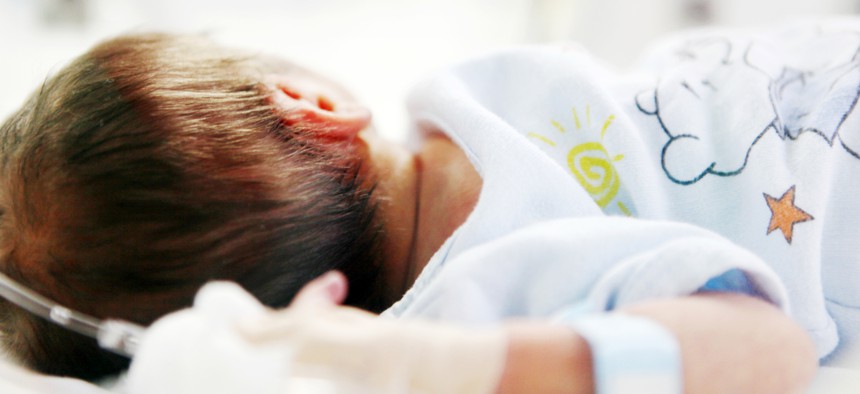Infant Drug Withdrawal Rates Linked to High Unemployment, Study Finds

The research studies rates of neonatal abstinence syndrome, a form of withdrawal most commonly experienced by newborns whose mothers use opioids during pregnancy. Shutterstock
Shortages of mental-health clinicians also affected the rates of infant withdrawal cases, researchers from Vanderbilt University found.
More newborns suffer from drug withdrawal in counties with high rates of joblessness and shortages of mental-health care providers, according to new research from Vanderbilt University.
Researchers studied rates of neonatal abstinence syndrome, or NAS—a form of withdrawal most commonly experienced by newborns whose mothers use opioids during pregnancy—among 6.3 million births to determine whether cases spiked in places with sustained unemployment and few mental-health clinicians. The births occurred from 2009 to 2015 in 580 urban and rural counties across eight states (Florida, Kentucky, Massachusetts, Michigan, New York, North Carolina, Tennessee and Washington).
The data showed a “significant association among higher long-term unemployment, higher mental health clinician shortage areas, and higher county-level rates of neonatal abstinence syndrome,” researchers wrote.
Those effects were most prominent in rural areas, which were most likely to have high 10-year unemployment rates. Across all counties surveyed, jobless rates ranged from 4.1 percent to 15.8 percent in 2015. Average rates of NAS were “higher in counties with the highest quartile of unemployment compared with those in the lowest quartile of unemployment,” or 20.1 cases per 1,000 births versus 7.8 per 1,000, according to the data.
Counties afflicted with high rates of both unemployment and infant withdrawal were concentrated in rural Appalachia (Kentucky, New York, North Carolina and Tennessee) as well as southeastern Massachusetts, southwestern Washington and northern Michigan.
The correlation between high rates of NAS and long-term unemployment rates suggests that “both past and present economic conditions” can cause lasting effects that contribute to the problem. Baraga County, Michigan, is a prime example, researchers noted, with a max unemployment rate of 24 percent in 2009 and a NAS rate that peaked at 113 cases per 1,000 births three years later, in 2012.
While shortages of primary-care providers were unlikely to affect NAS rates, places with a dearth of mental-health care clinicians were likely to have more newborns suffering from withdrawal, particularly in metropolitan counties.
That’s perhaps unsurprising, as prior research has shown that “untreated and undertreated mental health disorders increase the risk of opioid misuse and abuse,” researchers wrote.
NAS rates were also affected by higher concentrations of manufacturing jobs, but only in rural counties, the study found.
“This could be the result of higher rates of injury, chronic pain and disability experienced by many individuals working in manufacturing,” all of which can lead to opioid abuse. In rural counties with fewer job options overall, those risks are greater.
Nationwide, NAS rates increased from 1.2 cases per 1,000 hospital births in 2000 to 8 per 1,000 in 2014. “Similar to overdose deaths, the increases in NAS rates disproportionately occurred in rural, impoverished counties,” according to the report.
Kate Elizabeth Queram is a Staff Correspondent for Route Fifty and is based in Washington, D.C.
NEXT STORY: Supreme Court Tells Moose Hunter He Can Take Hovercraft Out on Alaskan River





